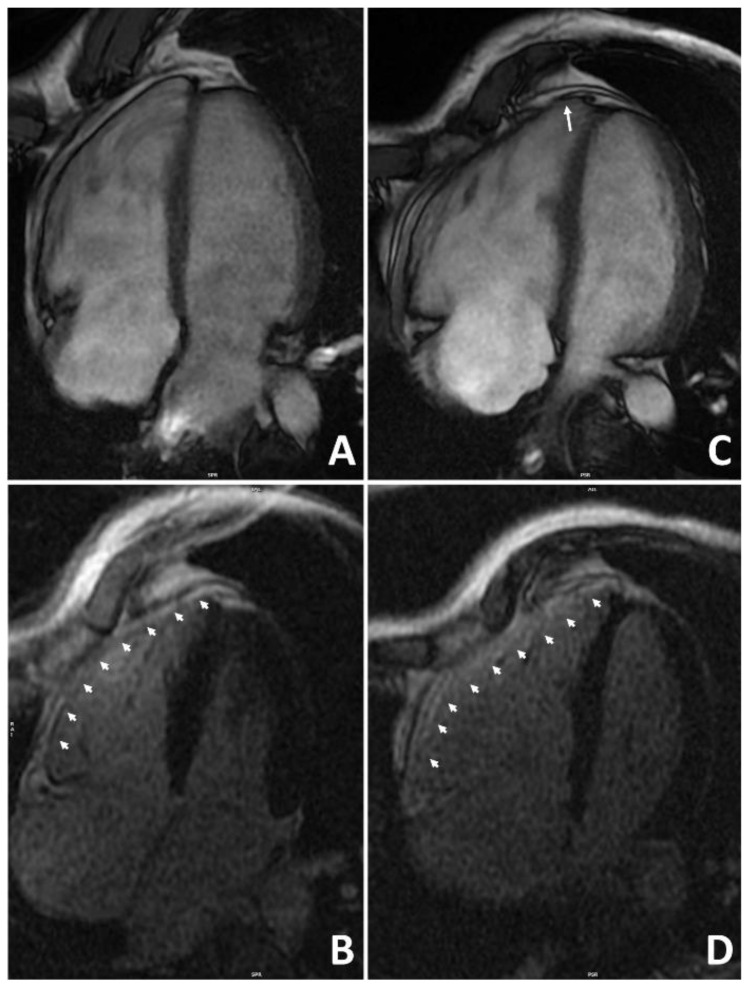Figure 4.
Representative example of the role of endurance exercise in worsening the arrhythmogenic cardiomyopathy phenotype. A 38-year-old runner received a diagnosis of arrhythmogenic cardiomyopathy after investigating ventricular arrhythmias and ECG abnormalities at preparticipation screening. Genetic testing was positive for plakophilin-2 gene mutation. At the time of diagnosis, cardiac magnetic resonance 4-chamber view on cine sequences found dilatation of the right ventricle with mild dysfunction (A) and diffuse right ventricular late-enhancement on post-contrast sequences (B). Although he was considered not eligible for competitive sports activity according to Italian law, he continued to practice high-intensity endurance training. After 4 years, repeat cardiac magnetic resonance showed a more enlarged right ventricle, an apical aneurysm (arrow), and a moderate right ventricular dysfunction (C). Post-contrast sequences confirmed diffuse right ventricular late enhancement (D). Reproduced with permission from Zorzi et al. [92].

